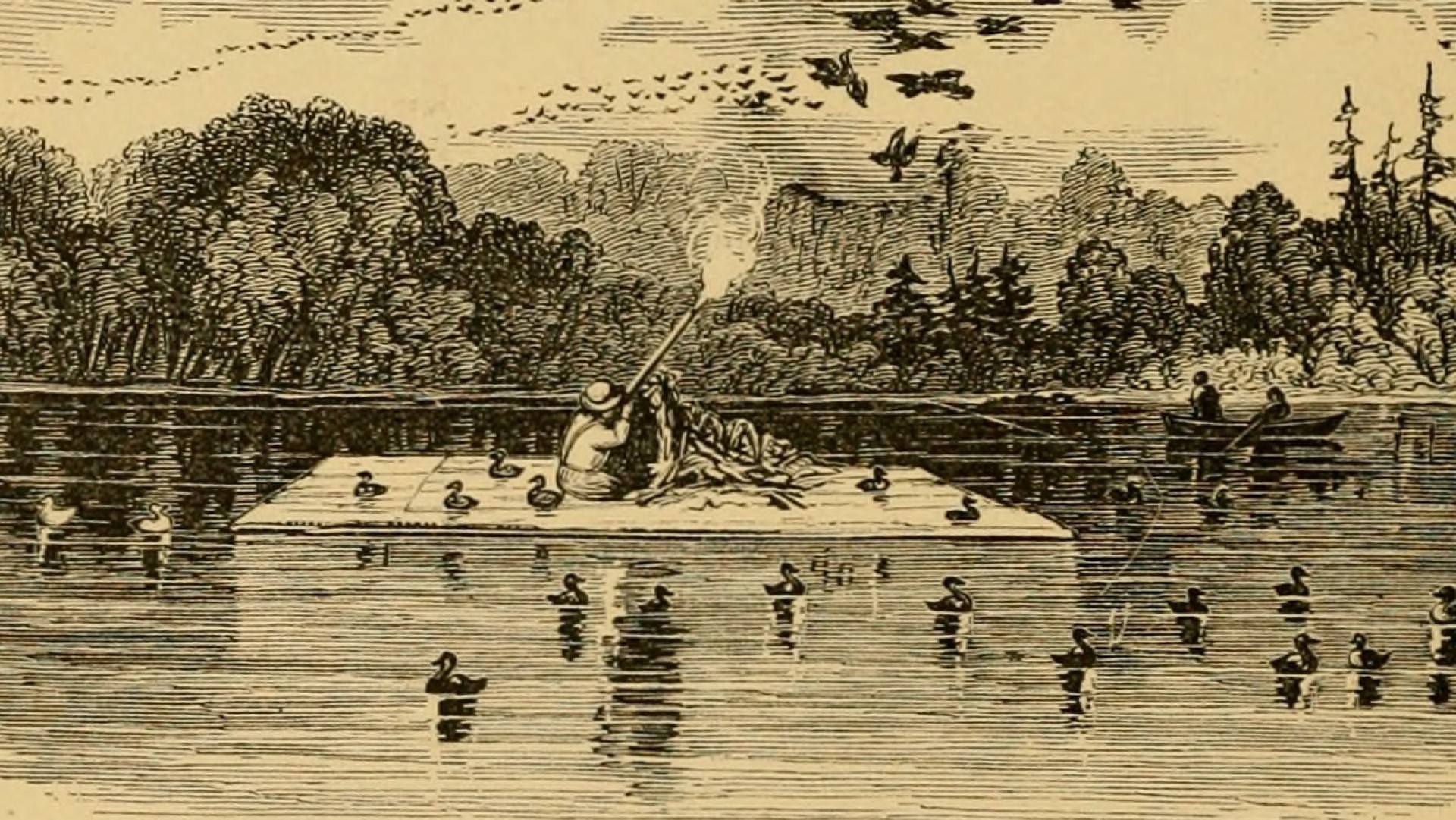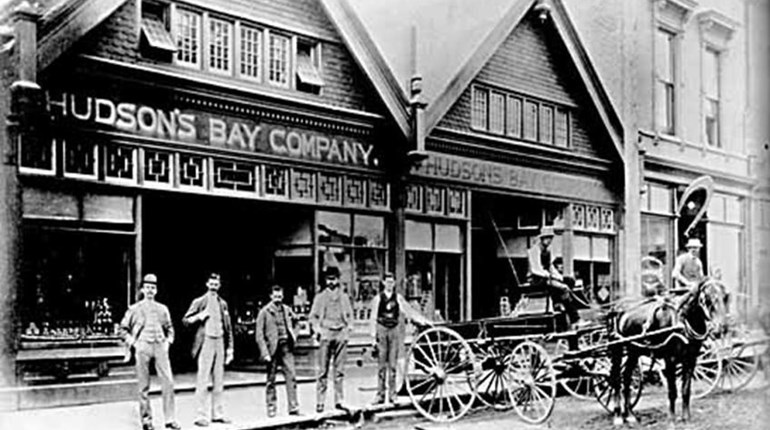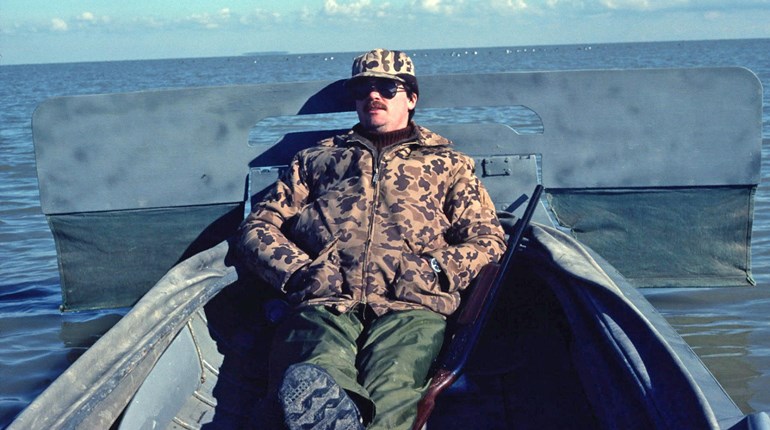
Baltimore Sun newspaper, Special Dispatch, November 1, 1893, Havre de Grace, Maryland:
“Wild-duck shooting began on the Susquehanna Flats today and a rough estimate places the number of birds killed at 5,000. The number would have exceeded that figure by many thousands but for the calm weather… The largest number killed by any one sinkbox was 235, and Jesse Poplar, of Havre de Grace, killed them all. The average number of ducks killed from sinkboxes was about 90.”
If you’re a modern-day waterfowler reading this NRA Family story hoping to learn a new hunting technique that will help you increase your bag of ducks and geese, I’m afraid you’re a bit late. Sinkbox shooting was so devastatingly deadly that it was outlawed over a century ago. Nevertheless, it’s part of waterfowling history, a fascinating era when ducks, geese and swans flew in such numbers that it’s difficult for us who hunt today to even imagine.
So what exactly was a sinkbox, also sometimes called a battery box? In essence, it was a coffin-sized, open-topped, waterproof wooden box about 18" deep that was towed offshore and anchored head and foot to hold it still in the wind and waves. Heavy weights in the form of iron duck decoys, weighing 25 lbs. each, were added to the edges of the sinkbox to lower it into the water until the top edge was just inches above the surface.
Floating wooden wings, covered with gray canvas, were then attached by hinges to the sides of the sinkbox, stabilizing it even more and helping to break up any waves that threatened to spill into the shooter’s box. Measuring roughly 20' long by 10' wide, most sinkboxes were large enough for only one hunter, but some double sinkboxes were also used.
Hundreds of wooden floating decoys surrounded the sinkbox, creating the illusion of a large raft of waterfowl feeding or resting safely far from shore. As a result, when unsuspecting birds approached flying low over the water, the sinkbox and hunter were virtually invisible amidst the many bobbing decoys. The hunter, lying on his back in the sinkbox, his head supported by a padded headboard, rose to a sitting position to shoot. Right-handed shooters were so situated in the decoy spread that they could shoot to their left, with left-handed shooters firing to their right.
Eight- and 10-gauge shotguns were preferred, the more accomplished shooters taking a pair of these big, heavy guns into the sinkbox. On windless days, smoke from the blackpowder shells, containing several ounces of shot each, hung over the sinkboxes like a cloud. Dead ducks were retrieved by an assistant in a small boat, who periodically picked up the birds as they floated downwind, belly-up, out of the decoys.
Sinkbox rigs were expensive, costing $10,000 or more at the time, which included an attending houseboat where the hunters ate their meals and slept overnight. During the first few months of the hunting season, guides catered mainly to sportsmen. Politicians such as President Grover Cleveland were taken duck hunting, as well as financial tycoons like J. Pierpont Morgan. But mid to late winter, with its severe cold, ice and snow—and most of the “sports” now back in the cities—many guides turned to market hunting, killing waterfowl any way they could well into the spring of the year.
“No one ever got rich at it,” said Ralph Murphy of Charlestown, Maryland. Murphy hunted using a punt gun at night and a sinkbox by day. “It took both to make a decent living,” he said.
The waterfowl hunted were a combination of diving and dabbling ducks, Canada geese, brant and, to a lesser extent, swans. But the most sought-after species of them all, the so-called “King of Ducks,” was the canvasback, a handsome, large, fast-flying bird that fed mainly on wild celery, more commonly known today as eelgrass, giving its meat an excellent flavor.
In 2011, author Hank Shaw wrote, “A look at the century-old menus of such swanky establishments like the Waldorf Hotel in New York City shows that an order of canvasback duck would cost you $4.50 in 1907. Do a little math and that’s the equivalent of about $104 in today’s dollars. And that, mostly likely, is for half a duck. Wow. Even at the market, a canvasback might cost $1.25, or the equivalent of about $32.50 in today’s dollars. Consider for a moment that the average worker in the United States earned 19 cents an hour and you realize that it would take nearly three days’ pay for that person to earn enough to order canvasback at a restaurant.”
During the late 19th and early 20th centuries, untold numbers of canvasbacks were shot and killed from sinkboxes. In fact, no place in North America held more canvasbacks than that upper section of Chesapeake Bay known as the Susquehanna Flats. Someone who experienced that fantastic hunting firsthand for nearly a lifetime was Bennett A. Keen.
“For 70 years I shot the world-famous Susquehanna Flats, starting about the year 1878 when I was a boy of 16,” remembered Keen. “Most of my shooting was done out of a sinkbox, the favorite rig for hunting at the head of the bay. At the height of the sportsman’s use of the Flats, about 1920, there were about 50 sinkbox rigs operating at Havre de Grace. These rigs consisted of a large boat which we called a ‘down-the-bay sharpie,’ maybe 45 feet long, two smaller boats to put out decoys and the sinkbox itself.”
Such an excessive level of hunting pressure and harvest, decade after decade, proved ultimately unsustainable. The sinkbox eventually became a relic. And conservation-minded sportsmen began pushing for further reforms. George Bird Grinnell, the editor of Forest and Stream magazine (and yes, Bird was his actual middle name!) in his 1901 book titled American Duck Shooting stated, “…to bring back the ducks to their old-time abundance the gunners must agree to: stop spring shooting; limit the size of bags for a day and a season; and stop the sale of game [market hunting].” All those changes and more were gradually accomplished, allowing us to enjoy waterfowl hunting in America yet today.
But Bennett Keen still remembered his days of sinkbox shooting as high times.
“Those were the good old days when ‘Pink’ West was proprietor of the Bayou Hotel near the water,” Keen said. “When the hunters first would come to town in the fall and ask if there were any ducks on the Flats, Pink would look real oppressed and say that if the doggone ducks didn’t stop crashing into the windows of his hotel and scaring away his customers, what with their breaking of glass, he’d… But by then there’d be so much laughter that no one ever heard the end of that sentence.”
Note: If you’d like to read more about the history of waterfowl hunting in America, especially the many specific techniques and firearms used, the 1971 book titled The Outlaw Gunner by author Harry M. Walsh is highly recommended.







































